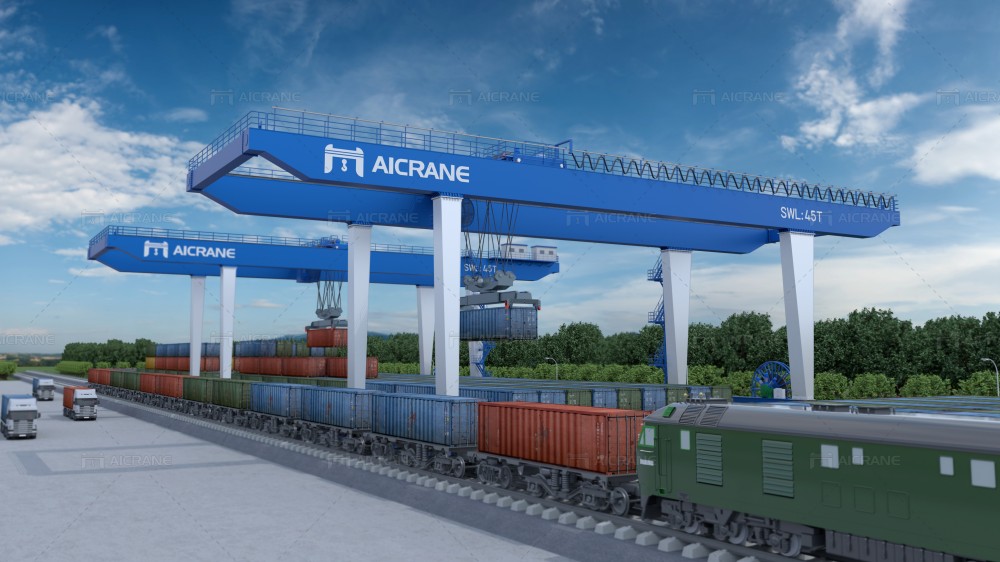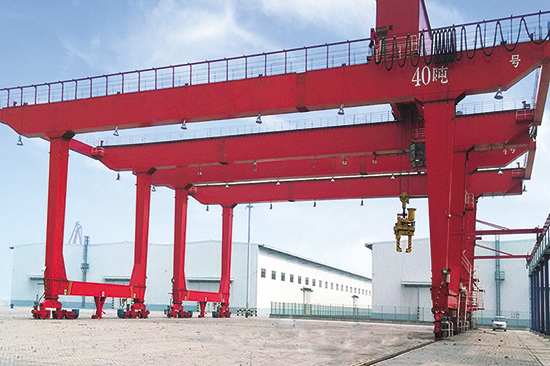In the bustling domains of ports and harbors, where the world’s trade converges, a silent evolution has been unfolding in the realm of cargo handling. Rail mounted cranes, often referred to as RMGs, have emerged as the rising giants of the harbor, transforming the landscape of logistics with their efficiency, precision, and adaptability. This article delves into the evolution of rail mounted crane technology, tracing its journey from humble beginnings to the cutting-edge innovations that shape the modern maritime industry.
Pioneering Efficiency in Container Handling
The story of rail mounted cranes is intertwined with the evolution of containerization. As the shipping industry transitioned from breakbulk cargo to standardized containers, the need for efficient loading and unloading methods became paramount. Traditional methods, while functional, were slow and labor-intensive, limiting the pace of global trade. It was in this backdrop that the concept of rail mounted cranes emerged as a game-changing solution.

Early Beginnings and Basic Design
The early iterations of rail mounted cranes were characterized by simplicity and practicality. These cranes were designed to straddle rail tracks, allowing them to move back and forth along the length of the dock. Equipped with spreaders that could grip and lift containers, these double girder cranes transformed the speed and efficiency of cargo operations. The concept was groundbreaking – containers could be swiftly transferred between ships and trains, streamlining the movement of goods across multiple modes of transportation.
The Transition to Automation
The true revolution in rail mounted crane technology came with the introduction of automation. As digital systems began to dominate industries, the maritime sector also embraced the power of automation to enhance operations. Automated rail mounted cranes were equipped with advanced sensors, cameras, and control systems that enabled precise movement and positioning. This shift not only improved efficiency but also increased safety by reducing the reliance on human intervention in high-risk environments.
Key Technological Advancements
Several technological advancements have shaped the evolution of rail mounted crane technology:
- Remote Control and Automation: Remote control systems allowed operators to manage cranes from a safe distance, minimizing the risk of accidents and improving efficiency.
- Anti-Sway Systems: Swaying of loads during lifting and movement can be a significant challenge. Anti-sway systems were introduced to counteract these motions, ensuring smoother and safer operations.
- Collision Avoidance: Proximity sensors and collision avoidance algorithms were integrated to prevent cranes from colliding with obstacles, other gantry lift cranes, or ships during operation.
- Data Analytics and Predictive Maintenance: Modern rail mounted cranes are equipped with data collection and analysis capabilities. This data is used to predict maintenance needs, optimize operations, and enhance overall crane performance.

Adapting to Industry Demands
The rise of larger container ships and the increasing demand for efficiency have driven innovation in rail mounted crane design. Ports and terminals across the world are investing in super post-Panamax cranes – giants that can handle multiple containers simultaneously, extending their reach to accommodate the larger vessels of today’s maritime trade.
Environmental Considerations
As industries shift towards sustainable practices, rail mounted crane technology is also evolving to reduce its environmental impact. Efforts are being made to introduce eco-friendly power sources, such as electrification and hybrid systems, to minimize emissions and energy consumption during crane operations.
The Future of Rail Mounted Cranes
Looking ahead, the future of rail mounted cranes is bright with possibilities. The integration of artificial intelligence and machine learning could lead to even more sophisticated automation, enabling cranes to adapt to changing conditions and optimize operations in real time. Furthermore, the continued growth of e-commerce and global trade is likely to drive the demand for even more efficient and versatile cargo handling solutions.
The evolution of rail mounted crane technology is a testament to human ingenuity and the relentless pursuit of efficiency. From their modest beginnings as innovative cargo handlers, rail mounted cranes have risen to become integral players in the maritime industry, transforming the way goods move across the globe. As the demands of global trade continue to evolve, these giants of the harbor are poised to keep rising, adapting to new challenges and technologies while shaping the future of logistics in the process. For more information about different crane lifting machines, you can check this website now https://aicraneglobal.com/.